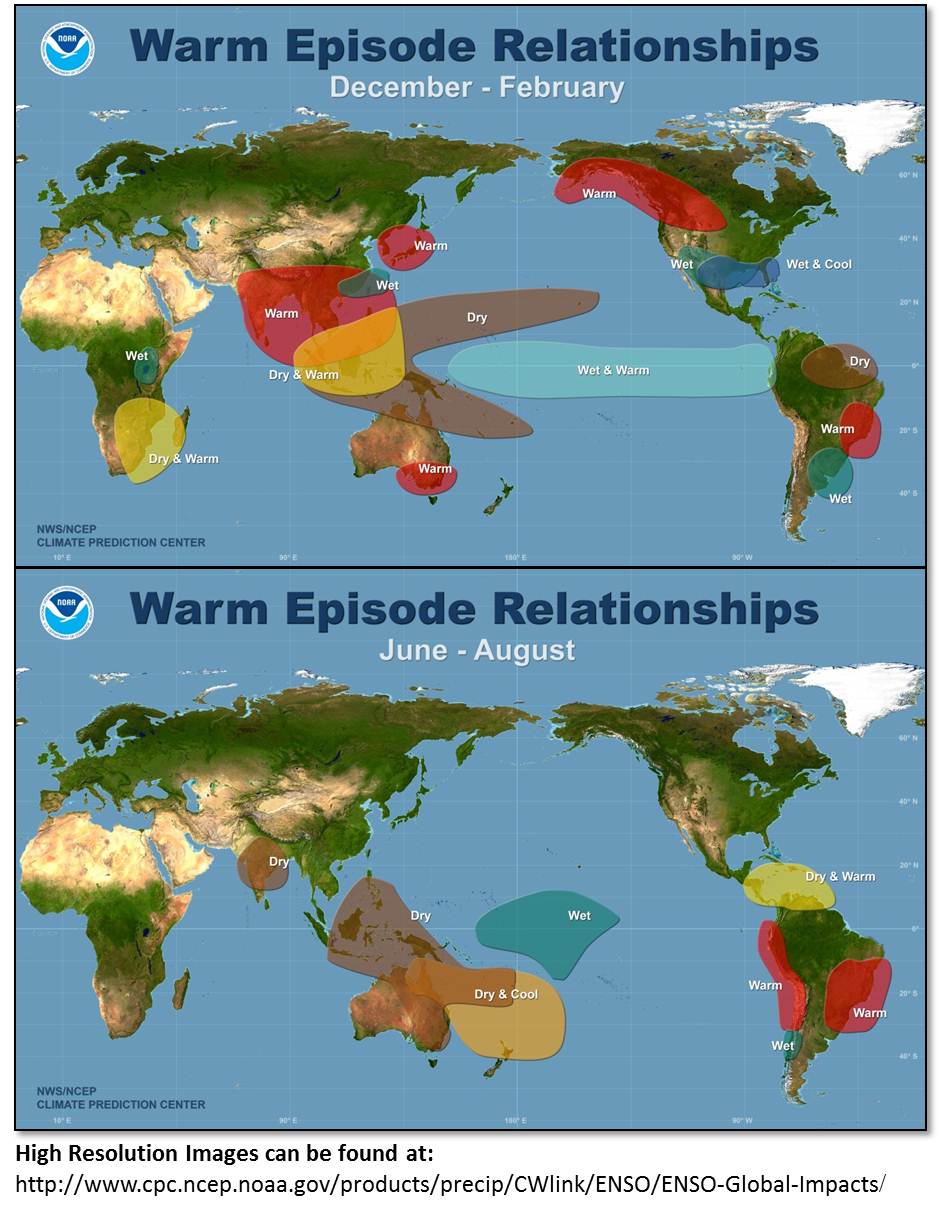
Source: U.S. National Oceanic and Atmospheric Administration
El Niño typically means a warmer, drier winter in the northern half of the United States, while the southern half of the country can look forward to a milder hurricane season and above average rainfall. Hotter, drier weather could have a serious impact on crops, while wetter weather in the south could ease drought conditions in many states.
The full impacts are wider however. In South America the effects mean hotter and drier weather in parts of the Amazon basin, Colombia and Central America. Southern Brazil may get wetter than normal weather. The impact on crops like coffee, sugar and corn can be significant.
In the United States, corn, wheat and other crops are threatened by lack of rainfall from the El Niño pattern, adding to uncertainty about production and ultimately commodity prices.
It is too early to panic, but not too early to start paying attention according to the CPC:
There remains uncertainty as to exactly when El Niño will develop and an even greater uncertainty as to how strong it may become. This uncertainty is related to the inherently lower forecast skill of the models for forecasts made in the spring.
The El Niño pattern begins to form in June and is fully formed by December. The good news is that unlike the La Niña pattern, El Niño typically lasts just one year instead of two or three.
ALSO READ: The 10 Fastest Rising Food Prices
Essential Tips for Investing: Sponsored
A financial advisor can help you understand the advantages and disadvantages of investment properties. Finding a qualified financial advisor doesn’t have to be hard. SmartAsset’s free tool matches you with up to three financial advisors who serve your area, and you can interview your advisor matches at no cost to decide which one is right for you. If you’re ready to find an advisor who can help you achieve your financial goals, get started now.
Investing in real estate can diversify your portfolio. But expanding your horizons may add additional costs. If you’re an investor looking to minimize expenses, consider checking out online brokerages. They often offer low investment fees, helping you maximize your profit.
Thank you for reading! Have some feedback for us?
Contact the 24/7 Wall St. editorial team.



